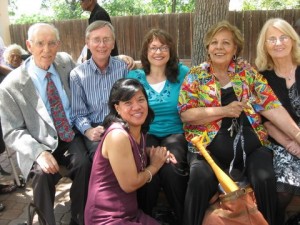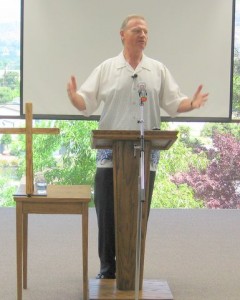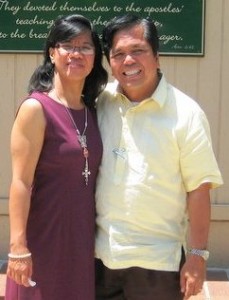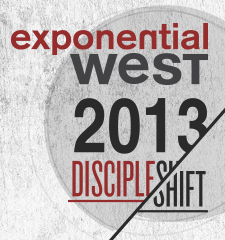This article is part four of a six-part series by Gary Deddo on interpreting Scripture. For part one, click here; for part two, click here; for part three, click here.
Rules for Interpreting Scripture
As I said at the end of part three in this series, “With the Center of our prayer, faith, devotion and worship set, as a kind of North Star, everything else regarding listening to and studying the Lord’s Scripture then gets properly oriented.” So now, let’s explore some of those more general implications that can be expressed as certain kinds of rules, which keep us navigating in alignment with our North Star.
Interpret Parts in Light of the Whole
As you know, Jesus is identified in Scripture as the First One and as the Last One. He is also identified as the living Word of God or the Logos of God. We could say that Jesus is and speaks both the first word to creation and is and has the last word about creation. Everything was set in motion by him and the ultimate destiny of everything is established in relationship to him, its rightful inheritor.
Perhaps we don’t often think of it, but recognizing this about Jesus, our risen and ascended Lord, has implications for our hearing and studying of Scripture. In the past it has been put this way: always interpret the various parts of Scripture (verses, paragraphs, chapters, books, etc.) in terms of the whole of Scripture. No part of Scripture ought to be understood simply on its own, but only in the context of the whole. Some have said that every part of Scripture ought to be interpreted in terms of the fullness of its meaning (its sensus plenior).
You may have heard the good advice to not take verses “out of context.” That’s right. The context includes not only the verses immediately surrounding a certain text, but the chapter, the whole book in which it appears and, in the end, the whole of Scripture. Many false teachings down through the ages and even in our contemporary situation come from taking a passage out of context and then concluding what it means on its own. In reality we can then easily substitute our own context for the actual context provided for us by the whole of Scripture. Our context then becomes the interpretive North Star. So there is no substitute for taking a lifetime to study the whole of Scripture, that is, considering “the whole counsel of God.”
But the whole turns out to be not just all the books and verses of the Bible. It turns out that the whole includes Who is before, behind, surrounding and standing at the end of Scripture. This whole is what the Bible says as a whole about who God is. As the Logos of all things, including Scripture, Jesus Christ contains it all. So the whole involves all of what we learn through the whole history of revelation preserved in Scripture. And every part must be grasped in a way that it contributes to the whole (of who God is in Christ) and how the whole includes the parts. That “rule” will help us properly hear and interpret the meaning of Scripture as we listen to its various parts, for it all comes from one and the same whole God, Father, Son and Holy Spirit. It ought to all sound like it belongs to one and the same God personally known in Jesus Christ.
Interpret the Unclear in Light of the Clear
Another “rule” often recommended in past ages of the church that will help us stay oriented to the North Star is to “interpret unclear passages in terms of the clear.” This is a good guideline. Much false teaching has derived from a fascination with the unclear, the obscure, or the opaque passages of Scripture. Teachers can take advantage of those cases because, given the ambiguity of their meaning, lots of meanings can be made to seem plausible. They’re not clear enough on their own to rule out a range of speculative understandings. So someone who can give a logical argument can often be persuasive, often actually reading in their own meaning. The rule to make use of clear passages to sort through the various options for interpreting the meaning of difficult parts guards against this danger. We especially should not let the unclear passages, and some particular understanding of them, be used to reinterpret the clearer passages!
But we can take this rule a step farther. Who or what is the clearest expression of the heart, mind, will and character of God? Jesus Christ. He is the Light of all light. All Scripture, in the end, should be understood in his clear Light. He alone shows us the face of God in person.
Let’s look at an example. The Pharisees of New Testament times had an understanding of God’s Law, the Torah. When Jesus came along they accused him of violating what they considered the highest priority of that Law, namely the keeping of the Sabbath. And they had worked out logically what must be implied in keeping the Sabbath. They interpreted Jesus and his actions in terms of their pre-understanding of the Law of God. How did Jesus respond to their accusations? Did he simply say, “I came to give you another interpretation of how the Law should be applied”? No, he said, “For the Son of Man is Lord of the Sabbath” (Matthew 12:8). The Pharisees gave priority to their understanding of the Law, and interpreted Jesus in terms of it. But Jesus countered by telling them who he was in relationship to the Law and so said, “I created the Law, I gave it its meaning, I know how it is to be honored and when it is being violated. Interpret the Law in terms of me, its Lord, not me in terms of the Law. It is my servant. I am not its servant, to be judged by it.”
So Jesus puts the Pharisees at a crisis point. Will they recognize Jesus as the Living Lord, the Lord of the Law or will they continue to use the Law as “lord” to interpret and judge Jesus? What or who is the whole and what or who is the part? What or who is the clear and what is relatively obscure? We may not regard the Law as the Pharisees did, but we may have other truths or attitudes or viewpoints that we assume and use to interpret or understand Jesus and who God is. Recognizing Jesus as the Center of the center will challenge us to view everything in terms of his interpretation of things, in his light.
We can sum up: we interpret the parts in terms of the whole and the unclear in terms of the clear, and all in terms of Jesus Christ!
Interpret the Old Testament in Light of the New
Another implication that has been identified in the past is to interpret the Old Testament in terms of the New Testament. This too is a good “rule” we can follow and further expand. Jesus is the fulfillment of the revelation and provision of God. That is, he is the self-revelation and the self-giving of God for us and for our salvation. He fulfills all the promises of God set up and signaled in the Old Testament. The promises are to be understood in terms of the fulfillment, not the other way around.
But the Old Testament is about more than the promises themselves. It involves an ongoing relationship and interaction of God with Israel over roughly a thousand years, including interaction with numerous prophets at various points in the history of that relationship. God was taking Israel somewhere and Israel knew it. God had not given them the final word. They looked forward to having his Spirit poured out on all flesh (Joel 2:28) being given to reignite life in the dry bones (Ezekiel 37:5) and having new hearts (Ezekiel 11:19; 36:26). They looked forward to the time of God’s peace or shalom when they wouldn’t have to prepare for war anymore and not have blood on their hands (Isiah 2:4; Joel 3:10; Micah 4:3). They anticipated the completion of the sacrificial worship where they could be in the very presence of the living God and then truly live! The Old Testament revelation included the proclamation that there was much more to come, that God was not finished making himself known and providing everything for them. Even at the conclusion of the last words of the prophets, they knew they were not at the end of the story. The climax had not yet been reached.
The fact that God’s revelation involves a history of interacting with Israel and speaking through selected prophets means that we should interpret any passage in terms of where it comes in the story as it leads up to or down from God’s self-revelation and self-giving in Jesus Christ. This rule of interpretation is especially important for particular ethical or liturgical directives given to ancient Israel. What God commands of Israel in a particular instance is not God’s final or eternal word.
For instance while the “eye for an eye and tooth for a tooth” saying was far more compassionate than the code of revenge practiced by the surrounding ancient near eastern cultures of the time, it was not God’s final word to his people. Rather, the final word is embodied in Christ who loved his enemies to the end and directed us to do the same. So interpretation should take into account where in the story we find the actions, attitude or instructions given. God fills out and clarifies his revelation through a history of interaction with his people, so not every word in the Bible is God’s last word on the subject. Providentially, there are many places in the New Testament where significant change or discontinuity,is explicitly spelled out, such as keeping of the Sabbath.
This does not mean that everything said in the Old Testament will necessarily be radically reinterpreted later on. Some insight or instruction may remain largely unchanged, such as principles we identify as broad moral instructions that are linked to our human nature and take into consideration our fallen condition. About rather permanent and universal features of humanity such as marriage, sexual morality and the relations of parents and children that abide throughout history and across differing cultural contexts, we would expect significant continuity of teaching. The New Testament often does spell out particular continuities and redemptive development of expression.
Even if there are some practical or particular differences, at the level of fundamental principles that reflect God’s character we should expect to see some continuity between earlier and later application of that same principle in the New Testament. There seems to be a redemptive development in the way God’s more general purposes are to be applied in the life of the church after the fulfillment of God’s will is accomplished in Christ as compared to before this fulfillment. An example would be that although Israel is directed at times to go to war, she was instructed not to be vengeful and to look forward to a time when her swords would be beaten into plowshares. The Christian church is called to continue along that trajectory to finally be peacemakers and to not regard any human being as their ultimate enemy, but rather forgive and seek reconciliation and restoration.
The issue of slavery seems to fall along the same lines. What was allowed to Israel is no longer to characterize the Christian church. So Paul directed Philemon to emancipate his slave Onesimus (Philemon 16-17). Slavery is a practice that was “passing away.” So such instructions as were given Israel cannot be directly picked up by the church now with no regard for our occupying a different place in the story than was ancient Israel. The God of the Bible is a God of life, not death; a God of freedom, not slavery; a God of love, reconciliation and redemption and not enmity and revenge. While we certainly can find signs of these characteristics in the Old Testament, at times some significant ambiguity appears along the way in God’s history of interaction with Israel. We now, however, live to bear witness to the clear and complete fulfillment of God’s Word in Christ, not to its foreshadowing and preparation. In this way, we interpret the Old Testament in terms of the New.
There we have several guidelines for properly interpreting Scripture with Jesus Christ the Living Word at the center of the Written Word. In the next two articles in the series we’ll continue to offer some more guidelines to help us stay oriented to our North Star.
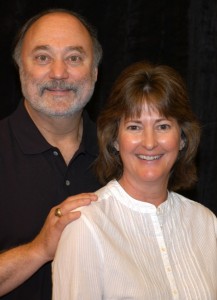 The Day of Pentecost celebrates the coming of the promised Spirit and the day the church began to preach the gospel to the world. As the disciples spoke, the large crowd from all over the region were astonished to hear the message of “God’s deeds of power” in their native languages.
The Day of Pentecost celebrates the coming of the promised Spirit and the day the church began to preach the gospel to the world. As the disciples spoke, the large crowd from all over the region were astonished to hear the message of “God’s deeds of power” in their native languages.


